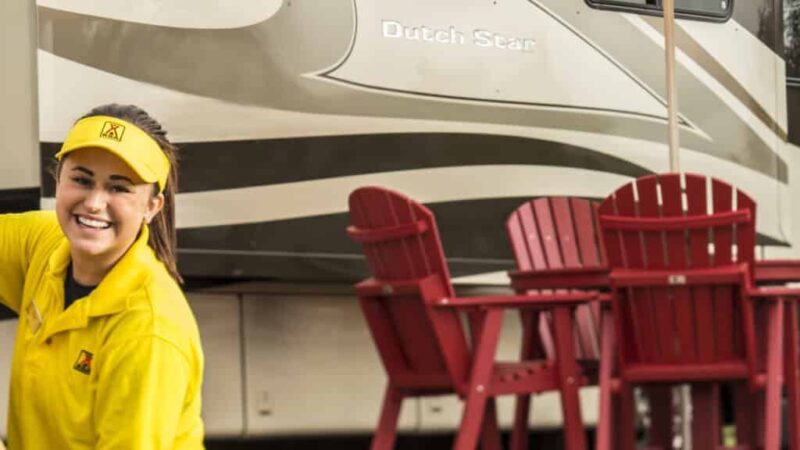The Trials of Troubleshooting
One FMCA member shares the story of how he fixed an issue with his RV generator.
By Steve Froese, F276276
I often receive emails from FMCA members asking me if I might be able to help them resolve technical issues with their RVs. Sometimes the issues are basic, but the readers need a little guidance. My favorite emails are the ones that describe unusual issues that make me put on my thinking cap, and sometimes even my engineer’s hat. I am usually able to help them fix the issue, but it is generally a collaborative effort, as we often message back and forth several times while I collect the necessary information to help them solve the problem.
Although I love helping members solve issues with their RVs, I am especially pleased when members write to tell me about complex issues they ultimately resolved themselves.
I think most of us who have been RVing for some time have had the occasional finicky generator. Jerry is one such FMCA member, and his persistence in dealing with his generator issue led to positive results. Here is his story:
“I write this because no doubt there are others out there who may have had the same problem. Our coach is a 2005 Mandalay on a Freightliner chassis with an Cummins Onan 8000 Quiet Diesel (QD) generator. The genset has a three-cylinder diesel power plant. When we purchased the unit, the dealer started the genset, and it ran great for a couple of minutes before it was shut off. We spend our winters in Arizona boondocking and use the genset a lot. During our first use of the genset, it ran four to five minutes and stopped. I had filled the fuel tank, so I knew that was not the issue. It would start right back up, run four to five minutes, and stop.
When we arrived in Quartzsite, I made an appointment with an RV repairman. We started the genset, and it quit within four to five minutes. He said he knew exactly what the problem was. The fan belt had broken, and it took four to five minutes to heat up and shut down the unit. Sounded reasonable to me. He would fix it for $900. I told him I could change the belt and would do it, and he told me just how.
We later spent three months with full hookups in Texas. Two former mechanics were next to me, so I pulled the genset out, pulled off the side curtains, and in the rear of the genset was the fan; however, the belt appeared new. It was tight and nothing was wrong. We all agreed it was a fuel problem. We changed the fuel filter and checked the fuel pump pressure (it would shoot fuel 10 feet). We checked the temperature of the coolant with a meat thermometer, and it showed 165 degrees, so it definitely was not a heat issue. I finally decided to wait until arriving back home in Billings, Montana, and take it into Cummins. So, we did in May. The tech came out, and we pushed the genset out and started it. It ran four to five minutes. He said it was a fuel problem, and then he told me he gets $150 an hour. It would take two hours to remove it, two hours to put it back in, and, unaware of how many hours needed to fix it, this could amount to an estimated $2,000 to $3,000 bill. So, I took it back home.
About a month later, we met for a family reunion in southeast Montana. Two of the guys there were diesel mechanics for the South Dakota road department. They looked at my problem, and both said it was a fuel issue. Then one of them said, ‘Why don’t you put a five-gallon bucket of fuel on the ground beside the genset, put the pick-up hose in, start, and see what happens?’ So, when I got home, I did just that. It ran perfect for 45 minutes until the bucket was empty. I’m thinking the rubber hose was weak and collapsing, so I bought 10 feet of new hose and installed it. Then I set my five-gallon bucket back by the fuel tank and tried the same thing again. It ran 45 minutes and ran out of fuel. I hooked up the new hose. It ran four to five minutes and stopped.
Then I decided I needed to get into the tank. We worked and worked, and we decided it was impossible to get the tank down. So, I did some very careful measurements, went up into the coach, cut a hole in the carpet, cut a four-inch hole in the floor, dug out four inches of Styrofoam, cut a film, and there was the fitting for the genset fuel pickup. It took a lot of WD-40 and Liquid Wrench, but I finally was able to get the pickup pipe out. I had measured the fuel tank, and it was 24 inches deep. The pickup pipe was to leave about five to six inches of fuel in the tank. I measured the pickup pipe, and it was 23 ½inches long and sitting on the bottom of the tank.
My opinion is the fuel pump was so strong that it would suck so hard it collapsed the hose. When the engine stopped, the hose would suck enough fuel to run another four to five minutes. I built a new stainless-steel ⅜-inch pipe 19 inches long. It has never failed again. I talked to many people about this problem, and no one could give us an answer.”
It sure seems as though Jerry discovered the root of this problem, but it took cutting a hole in the floor of his RV and getting down to the nitty-gritty. Many people would have given up long before this. Good work, Jerry!
The post The Trials of Troubleshooting appeared first on Family RVing Magazine.
Source: https://familyrvingmag.com/2024/03/18/the-trials-of-troubleshooting/



